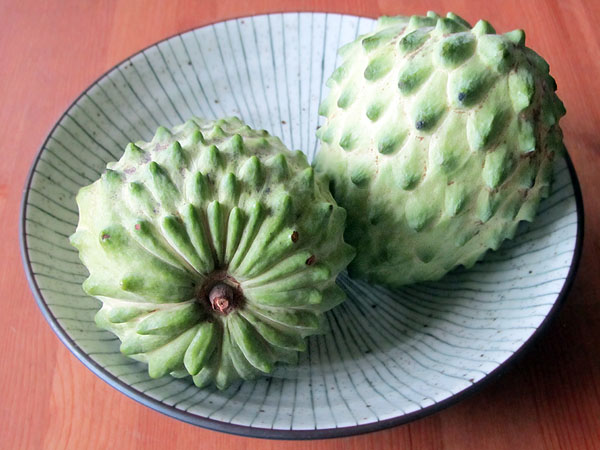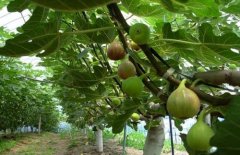What are the effects and effects of pineapple Sakyamuni fruit? How to choose pineapple, how to preserve it, how to eat it.
Winter to early spring (December to March) is the production season of pineapple Sakya. Pineapple Sakya, also known as Honey Sakya, is rich in protein, potassium, calcium, magnesium and vitamin C. it is known as "the three most beautiful fruits in the world". Sweet taste, let people like it!
Let's take a look at the sweet, safe and quality Sakya.
Pineapple Sakya, which is directly sent from the origin, is harvested by medium well. When the house arrived, it had not yet softened, so it was put in a cool place together with the cartons, waiting for it to be cooked and soft. Because it is colder these days, it softens for about 5 days.
[how to choose pineapple Sakya]
It is a good way to choose a "Jiyuan Garden" safe fruit and vegetable label.
The fruit is enlarged and the pointed grain with protuberance is better.
Of the same size, the heavier the sweetness is.
The scales on the surface are evenly equidistant, sweetness and moisture are sufficient.
If you buy ripe and soft pineapple Sakya, you should pay attention to whether the pedicel has turned black.
[how to save]
Unripe and soft Sakya can not be put in the refrigerator, it will become a "dumb Sakya" and cannot be eaten.
Sakya water is slightly wet, wrapped or covered with newspaper, so that it can ripen quickly and soften.
Put it in a cool place, soften slightly and refrigerate for 3 to 5 days. Wrap the paper, put it in a plastic bag and tie a little knot.) Wash it before eating.
In the mature pineapple Sakya, the pointed grain of the protuberance becomes gentle. Gently squeeze the pedicel head and fruit to see if it is soft.
[how to eat]
Cut the pineapple Sakya in half and slice it.
The highly recommended way to eat → soft-ripe pineapple Sakya, use a knife along the peel, easily cut off the pulp and then cut into pieces. The flesh can be eaten clean without touching the hands.
Carefully taste the rich and refreshing sweet taste, good satisfaction! Can also be frozen and then slightly de-iced to eat, thick taste very much like ice cream!
Let's take a look at the best quality Sakya produced in Taitung! Sweet slightly sour pineapple Sakya, flesh Q sweet big-eyed Sakyamuni.

- Prev

What are the properties of figs? What are the ways to grow figs?
Figs are fruits. How much are figs per jin? You must know, do you know the properties and planting methods of this kind of fruit? Do you want to know about it? Let's take a look at it together. On the properties of figs figs are classified as
- Next
Taiwan Bowl Bowl: champion Bowl is on the market, and the Agriculture and Food Department hopes to have an average annual rice output of more than 50 kg.
In order to promote rice culture, the Agriculture and Food Department, in cooperation with super-merchants, launched the "Toyama Champion Bowl", which was technically guided by the winner of the bowl competition last year. Each bowl uses 29 grams of Indica Rice Taichung 17, which has been available in more than 3,000 households in Taiwan since the 29th.
Related
- The first cup of black tea in spring, the flavor and history of tea gardens in Kenya, Africa
- The computer can not only choose potatoes, but also grow tea rice. AI will grow winter oolong tea champion.
- It is not only the inflated tea bitten by insects, but also engraved with the four seasons tea in Beipu.
- The Oriental Beauty Tea Festival in Zhuxian County takes the stage at the weekend to experience the plus-size feast of oil tea.
- & quot; Oriental Beauty Tea & Exploration of Emei in Hsinchu, the hometown of quot;
- The new variety of strawberry "Tainong 1" dessert is the first choice with mellow aroma. Crimson gorgeous
- History of Tea in Taiwan: from Wild Inner Mountain to Export Tea Garden
- Two types of Taiwan Oriental Beauty Black Tea won the British three-Star Award for Childhood Tea Xiang Zhang Jiaqi changed from pilot to champion tea maker.
- Banana species and varieties: the planting history of Taiwan Xianren banana and dwarf banana is long, is banana disease resistant?
- Coffee planting Technology: Qianjie Coffee from Seedling to harvesting

